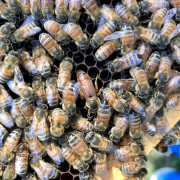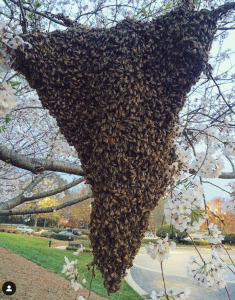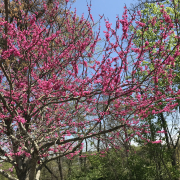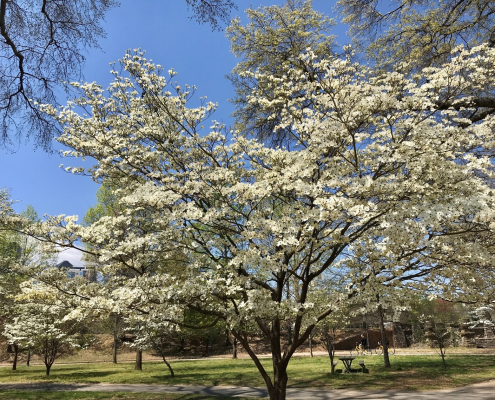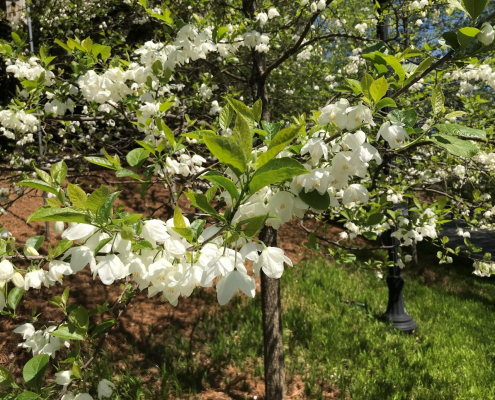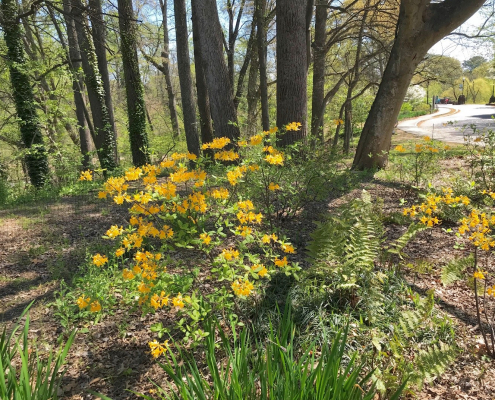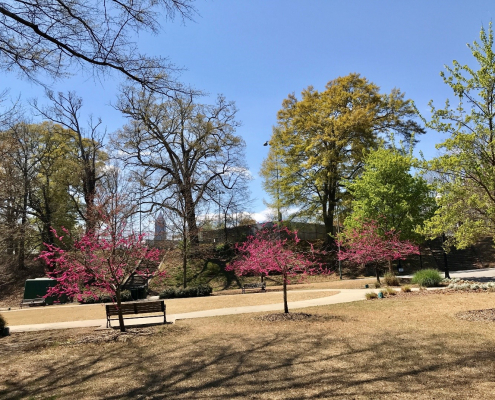Bee Aware: Spring May Bring Honeybee Colonies to Piedmont Park
If you’ve visited Piedmont Park recently, you may have noticed something unusual in the trees near the Invesco Beehives in the Piedmont Commons. You may also wonder if it was left there on accident.
Photo Credit: Bee Downtown
These biodegradable landscaping pots were hung in the trees on purpose by our friends at Bee Downtown. The pots are called “swarm traps” and are used for best beekeeping practices from the months of March through July. Honeybee colonies grow quickly, and when they outgrow their hive, spread through a process called swarming.
Photo Credit: Bee Downtown
When a colony swarms, 60% of the bees leave the hive to search for a new one. The group takes flight, clusters up and latches on to whatever they can find while scout bees look for a new home. This is where the swarm traps are put to use. They provide a home for the colony and allow Bee Downtown to safely relocate the bees to a more permanent home.
While alarming at first, honeybee swarms are harmless. The bees have no home so they have nothing to defend and their bellies are so full of honey that they can’t bend over to sting!
Photo Credit: Bee Downtown
If you see a swarm anywhere, whether it’s on a tree or in a box, please call or text the Lead BDT Beekeeper, Nick Weaver, at 678-779-8143 or Pam Allen at 770-310-1673.
If you have any bee-related questions or concerns, please email [email protected]

